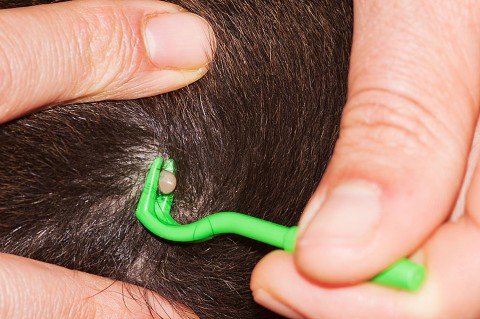What you need to know to protect your pet.
What are ticks?
Ticks are not insects, but eight legged arachnids, most closely related to spiders. They are external parasites that feed on the blood of their host, which can be an animal or a human. The most common ticks seen in BC are the species Ixodes Pacificus (Western Black Legged Tick)and Dermacentor (Rocky Mountain Wood Tick).
How do ticks get onto your dog?
Ticks climb up onto blades of grass or shrubs and when an animal or person brushes by they quickly climb on to the host. Ticks cannot jump or fly, they only crawl. Ticks can be in the environment all year round, but they are most active in the spring and the fall.
How can you find a tick on your dog?
Most ticks are found around the head and neck, including the inside of the ears, but they can be anywhere on the body. Ticks can vary in size with different life stages, but they are visible to the naked eye. It is important to check your pet for ticks after being in a potential tick area. Part the fur and check from head to tail. Ticks will look like a brown or black bump on the skin, but if you look closely you will see its legs sticking up at the base of where it is attached to the skin.
Why are ticks important to remove quickly?
Multiple ticks can potentially lead to blood loss and anemia; however, even a single tick can cause harm to your pet by transmitting an infectious disease. The tick species Ixodes Pacificus can carry the bacteria Borrelia burgdorferi, which is the causative agent of Lyme disease. Fortunately, Lyme disease is uncommon in BC and surveillance testing of ticks shows that less than 1% of Ixodes ticks in BC carry the bacteria. Furthermore, a tick must be attached to your pet for greater than 24-36 hours before it can effectively transmit the disease. Ticks can also cause a disorder called tick paralysis. This is a potentially life-threatening progressive paralysis that results from a toxin in the tick’s saliva. Most animals will make a complete recovery with supportive care once the tick is removed
What should you do if you find a tick on your dog?
In general, the best way to remove a tick is to grasp the tick as close to the skin as possible and detach it by applying a steady upward force. Care must be taken to avoid leaving behind mouth parts or provoking regurgitation of infective fluids into the wound. Tick removal can be facilitated by purchasing a Tick Twister. It is not recommended to try to remove the tick via more drastic means such as pouring rubbing alcohol on the tick or burning it off, as these methods are unreliable and potentially harmful. If you are unsure how to remove the tick or suspect the tick was not fully removed you should make an appointment with your veterinarian.
Can ticks be prevented?
There are several different products on the market that can help repel and/or kill ticks that attach; including topical treatments, sprays, tablets and collars. These treatments are especially recommended for dogs travelling to areas with high tick populations. Ask your veterinarian if one of these products is right for you and your dog.
KEY POINTS TO REMEMBER:
1. Check your dog carefully for ticks everyday if you have been in an area with a potential tick population
2. Remove ticks as soon as possible to protect your pet from transmission of infectious diseases and tick paralysis




